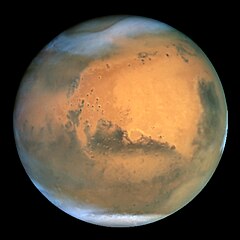Colonizing Mars vs. colonizing Ceres
Tuesday, May 13, 2008
Edit a few months later: I now have a much more detailed writeup on the subject here.
VS
Since we've yet to have sent a probe to Ceres (Dawn won't be arriving until 2015) the subject isn't even on the radar for all but the most elusive of forum threads and discussions at present. It's a worthy discussion though, because in my opinion Ceres would be that much easier to colonize than Mars, which is why I started this discussion over at space.com last year. I'll include some of the more interesting replies in this post.
josh_simonson, in reply to somebody else:
>Also, there are more launch windows to Mars then there are to Ceres (roughly once every 4.5 years, compared to once every 2 years for Mars).
Actually it's the opposite. The problem with Mars is that it's orbit is so close to the earth's that it takes two years for the earth and Mars to line up (for the earth to 'lap' Mars) and make a transfer possible. Since Ceres' orbit is longer (4.5 years) that means that we get a launch opportunity to Ceres every 15 months or so - setting a minimum Ceres mission at around 15 months - much better than the 26 months for Mars.
As far as mission scheduling goes, Mars is actually in a pretty lousy orbit.
That's right; Mars has a really bad location for sending missions due to it being just far enough away that the trip takes about six months, but not for enough away that launch windows revert to a more normal, and frequent time. At the same time, Ceres takes a lot longer to orbit the sun which means that missions from here could be launched every 15 months, but launch windows to Mars only happen every 2 years and 2 months.
At the moment the largest problem we have is the six-month travel time from Earth to Mars or another destination, because of the fact that we've never spent that long in interplanetary space before, radiation is a problem and if an accident happens on the way there would be no way to bring the crew back to Earth, not until another launch window opens up. Once we've solved the first problem with new types of propulsion such as VASIMR, taking 90 days, that'll also mean that a trip to Ceres shouldn't take that much longer, and less time than it takes to go to Mars at present. Even with new propulsion though we'll still have to wait for launch windows, so the two years and two month waiting time won't change after that.
Adding to that is the much lower gravity (5% of Earth compared to 36% of Earth on Mars) which means we'll need that much less fuel to get back, the lack of weather (what happens if another dust storm happens during a mission, mostly blocking out the soar panels?), and the lack of seasons, it's very likely that Ceres could be a better destination than Mars.
We're still waiting for Dawn to arrive though, and everything will depend on that. It's fully possible that there could be an unwelcome surprise making it harder or impossible to explore, but I'm hopeful that it'll turn out well. By the time 2015 comes around, if Ceres turns out to be that welcoming a location (relative of course since this is space), expect a lot more posts on why we should be focusing on there.
By the way, here's Ceres compared to the size of Mars (Ceres is on the right, Mars is the big red sphere on the bottom that doesn't even fit in the image):

And here's another image, where Ceres is second from the right (ergo, the smallest).






0 comments:
Post a Comment